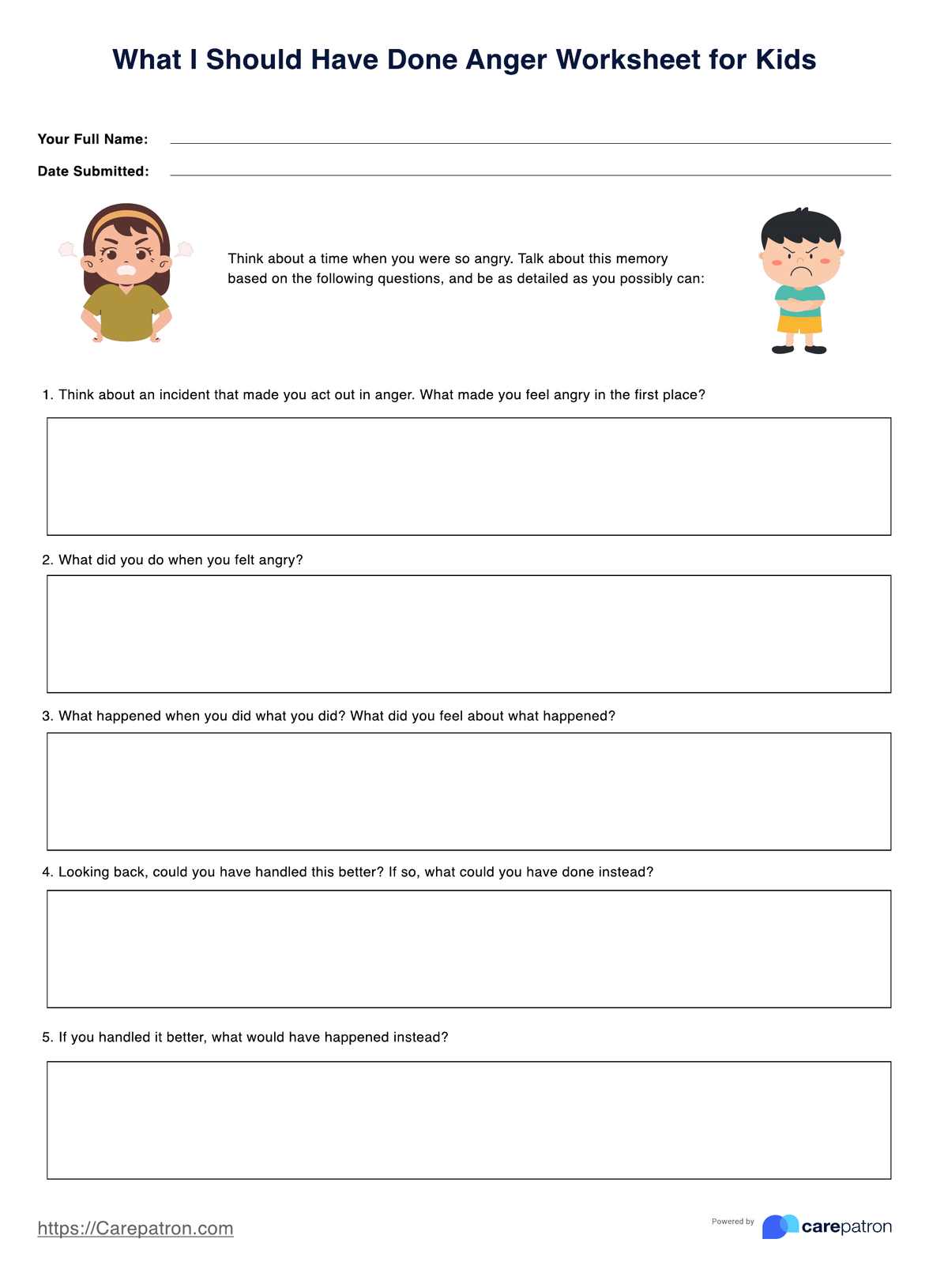That depends on the child. Don’t worry about the length of time it takes since you’re dealing with children. Give them enough time to process their thoughts and experience with anger.

Anger Worksheets For Kids
If you’re handling a kid with anger issues, use this worksheet to help them reflect on and regulate their behavior. Learn more about it through this guide.
Anger Worksheets For Kids Template
Commonly asked questions
The instructions and questions are simple, but since you are dealing with kids, they might find it difficult to process their feelings of anger. Make sure to provide them with the necessary support, especially if they’re struggling to write. Make them feel safe to share.
Yes, by all means. If you believe you can talk to your child about what they’ve been doing and think this will help, download it! Though, please don’t substitute this for therapy. If you are having trouble explaining things to your child or helping them work through their anger, perhaps it’s best to have a professional assist you with that.
EHR and practice management software
Get started for free
*No credit card required
Free
$0/usd
Unlimited clients
Telehealth
1GB of storage
Client portal text
Automated billing and online payments











